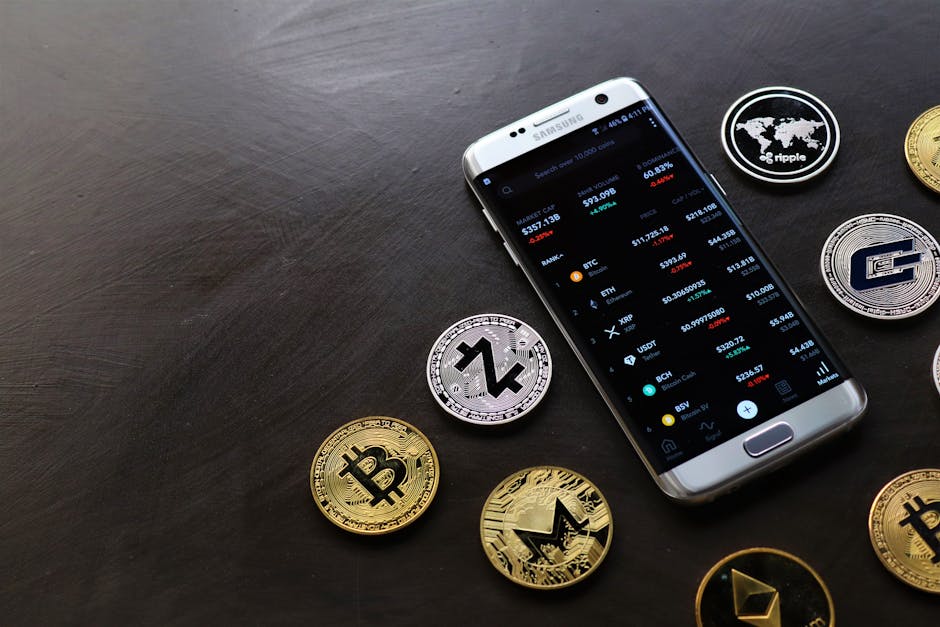
Solana ETFs Are Live: So Why Isn't SOL Soaring Beyond $200?
The cryptocurrency world has been buzzing with anticipation for Solana Exchange Traded Funds (ETFs). Following the successful launches of Bitcoin and Ethereum ETFs in various markets, the institutional embrace of digital assets seemed inevitable, with Solana pegged as the next big contender. Many enthusiastic SOL investors had high hopes, setting ambitious price targets ranging from $300 to a staggering $1,000 upon ETF approval. Now, with Solana ETFs officially launched, a curious silence hangs in the air: SOL's price remains stubbornly below the $200 mark. Did the market 'sell the news,' or are there deeper factors at play?
The Hype: Why Solana ETFs Generated Such Buzz
The journey towards Solana ETFs was fueled by a potent mix of factors. Firstly, the very existence of an ETF lends significant legitimacy to an asset, opening doors for traditional investors who prefer regulated, easily accessible investment vehicles over direct crypto purchases. This institutional gateway promised a flood of new capital into the Solana ecosystem.
Secondly, the precedent set by Bitcoin and Ethereum ETFs was hard to ignore. Their respective launches were often followed by periods of increased price appreciation, drawing in billions of dollars from institutional and retail investors alike. Solana, with its high-speed transactions, low fees, and rapidly expanding dApp ecosystem, was seen as a prime candidate to replicate this success. Analysts and proponents pointed to its robust technology and growing utility as strong arguments for why institutional money would naturally flow its way, pushing SOL to new all-time highs.
The Reality Check: Post-Launch Performance and the Muted Response
Despite the palpable excitement and the eventual launch of Solana ETFs (in various jurisdictions outside the US, as the regulatory landscape for altcoins in the US remains complex), SOL’s price performance has not met the sky-high expectations. Instead of a dramatic surge past $200, the token has largely consolidated or seen modest movements, leaving many investors scratching their heads and wondering what went wrong.
This stark contrast between pre-launch anticipation and post-launch reality naturally brings one common crypto market phenomenon to mind: the 'sell the news' event.
Understanding the 'Sell the News' Phenomenon
The 'sell the news' adage is a well-known concept in financial markets. It describes a scenario where an asset's price rises significantly in anticipation of a widely publicized, positive event. However, once the event actually occurs (the 'news' is released), the price often drops, sometimes sharply. This happens because smart money and early traders 'buy the rumor' – accumulating the asset before the news breaks – and then 'sell the news' – taking profits once the event is confirmed, as the anticipated upside has already been priced in.
Did this play out with Solana? It's a plausible theory. Many investors might have bought SOL months in advance, betting on an ETF approval to trigger a rally. Once the ETFs were a reality, these traders might have cashed out, leading to selling pressure that offset any new buying interest generated by the ETF launch itself. This kind of short-term profit-taking can often overpower the initial positive sentiment.
Beyond 'Sell the News': Other Factors at Play
While 'sell the news' might be a contributing factor, it's rarely the sole reason for market behavior. Several other elements could be influencing SOL's current price trajectory:
- Broader Market Sentiment: The overall cryptocurrency market often moves in sync. If Bitcoin is consolidating or experiencing a downturn, altcoins like Solana typically follow suit. Macroeconomic factors, such as inflation concerns, interest rate policies, or global economic uncertainty, can also dampen investor appetite for riskier assets like crypto.
- Regulatory Uncertainty (Especially in the US): While some Solana ETFs have launched, the regulatory environment, particularly in the United States, remains a significant hurdle. The U.S. Securities and Exchange Commission (SEC) has not yet approved spot Solana ETFs, and its stance on whether cryptocurrencies like SOL are securities continues to create an overhang of uncertainty. This uncertainty can limit the magnitude of institutional inflows and overall investor confidence.
- Institutional Inflows Take Time: Unlike retail investors who can buy and sell quickly, institutional capital often moves slowly and deliberately. Large funds and asset managers conduct extensive due diligence and often accumulate positions over time. The immediate impact of ETF launches might be modest, with the true effect of sustained institutional buying becoming apparent over months, not days.
- Profit-Taking from Earlier Rallies: Solana has experienced significant rallies in the past year. Many long-term holders might see the ETF launch as an opportune moment to realize substantial gains, adding to selling pressure.
- Network Fundamentals and Competition: While Solana's fundamentals are strong, the crypto space is intensely competitive. Continued innovation from rival Layer 1 blockchains and any perceived challenges to Solana's network stability or decentralization could also influence sentiment.
The Long Game: What's Next for Solana?
For long-term investors, the launch of Solana ETFs represents a significant milestone, regardless of immediate price action. ETFs are fundamentally about broadening access and legitimizing an asset class. The immediate price surge might not have materialized, but the door for institutional capital is now open wider than ever before.
The focus may now shift back to Solana's core strengths: its technological innovation, developer activity, and the growth of its decentralized applications. Sustained ecosystem development, coupled with a potential improvement in broader market conditions and further regulatory clarity, could eventually pave the way for SOL to reach and even surpass those ambitious price targets. Patience, it seems, is the ultimate virtue in the evolving world of crypto investments.
Keywords: Crypto
